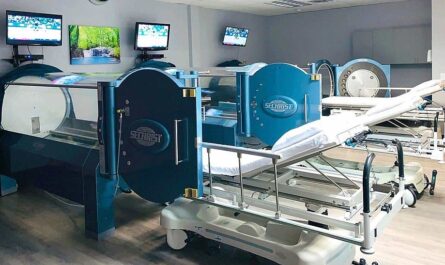Bone tumor ablation is a minimally invasive surgical technique used to destroy tumors located in the bones. Various ablation devices utilize different sources of energy such as radiofrequency, microwave or cryotherapy to ablate the tumor tissue. By carefully inserting these devices directly into the tumor site, physicians can eliminate tumors without requiring extensive surgery.
Types of Bone Tumor Ablation Devices
Radiofrequency Ablation Devices
Radiofrequency ablation (RFA) utilizes alternating current to generate heat and destroy tumor tissue. An RF probe is guided to the Bone Tumor Ablation Devices site using imaging guidance like CT or ultrasound. High frequency electric current is delivered through the probe’s insulated needle electrodes to create temperatures of 60-100°C at the tip which kills the tumor cells through coagulation necrosis. RFA procedures for bone tumors can be performed as an outpatient procedure under light sedation or local anesthesia. Multiple probes may be used simultaneously to treat larger tumors.
Microwave Ablation Devices
Microwave ablation (MWA) employs microwave electromagnetic waves to induce rapid oscillation of water molecules and heat ablation of tissue. Microwave antennas are inserted percutaneously under imaging guidance and emit microwave energy in the range of 915-2450 MHz. This generates frictional heat from the antenna extending several centimeters beyond the tip. Bone tumors up to 5 cm can be effectively treated with MWA which offers advantages like faster ablation times and wider ablation zones compared to RFA.
Cryoablation Devices
Cryoablation utilizes extreme cold produced by cryoprobes to freeze and destroy tissue. Liquid nitrogen or argon gas are circulated through thin cryoprobes inserted into the tumor. This results in intracellular ice formation leading to cellular destruction. Advantages include minimal blood loss or need for systemic anesthesia. However, freeze time required is longer than heat ablation methods. Cryoablation can treat small and ill-defined tumors in bones effectively.
High Intensity Focused Ultrasound Devices
High intensity focused ultrasound (HIFU) utilizes intense beams of ultrasound energy focused on the target tumor tissue to coagulate necrosis without skin incisions or punctures. The ultrasound beam penetrates the soft tissues and bones to reach deep located tumors with minimal effect to intervening tissues. HIFU offers non-invasive tumor ablation without breaching the skin barrier and is best suited for superficial bone tumors.
Image Guidance and Post Ablation Monitoring
Advances in Imaging Guidance
Precise placement of ablation probes with millimeter accuracy is crucial for success of bone tumor ablation. Significant advances in multimodality imaging guidance have increased efficacy and safety of procedures. Technologies like CT, MRI, PET/CT, fluoroscopy or ultrasound provide real-time image guidance for percutaneous probe placement and monitoring of ablation zones. Combined modalities allow accurate tumor localization, measurement of ablation margins and verification of complete treatment.
Monitoring Treatment Response
Follow up imaging is important to assess treatment response after bone tumor ablation. Residual enhancing tumor margins typically signify incomplete treatment necessitating additional sessions. Non-enhancing hypoattenuated zones indicate coagulation necrosis confirming ablation success. MRI is useful to delineate ablation zones and detect thermal injuries to adjacent neurovascular structures. Biopsy of margins helps rule out residual viable tumor if enhancement persists beyond 4-6 weeks. Gradual resolution of zones confirms effectiveness of ablation over months follow up period.
Clinical Applications and Outcomes
Osteoid Osteoma Ablation
Osteoid osteoma is a common benign bone tumor that causes severe pain in children and young adults. Radiofrequency and laser ablation have emerged as excellent minimally invasive alternatives to surgical excision for these small tumors typically less than 1.5 cm in size. Success rates of over 90% are reported with ablation resulting in immediate pain relief in most cases.
Metastatic Bone Lesion Palliation
Ablation is useful palliative treatment option for patients with metastatic bone disease who are poor surgical candidates. With advancements, ablation can treat tumors near periarticular regions, vertebrae or pelvic bones which were difficult to access earlier. This provides significant pain relief and functional improvement to patients with limited life expectancy from advanced malignancies.
Primary Bone Tumor Ablation
While excision remains mainstay for large or high grade primary tumors, minimally invasive ablation is increasingly utilized as adjuvant or definitive treatment for tumors smaller than 3 cm. Studies report excellent local tumor control rates of over 80% with ablation for low grade chondrosarcomas, aneurysmal bone cysts and other primary benign bone lesions.
Future Perspectives and Conclusions
Developments in thermally safe multifrequency technologies, nanoparticle mediated therapies and laser ablation are likely to further expand role of minimally invasive options. Combination of ablation with other treatments like chemotherapy, targeted drug delivery or immunotherapy hold promise to optimally treat primary as well as metastastic tumors in future. Overall, bone tumor ablation techniques provide significant advantages and can now effectively treat a wide array of benign and malignant osseous lesions of varying sizes and locations across all age groups. Wider acceptance and future refinements will help establish these as standard therapies for bone tumors.




